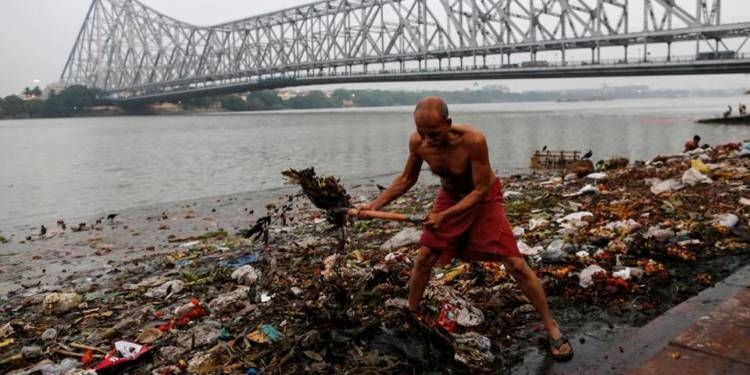
West Bengal: A Journey from a developed to BIMARU state
Some of the most backward states of India (Bihar, Madhya Pradesh, Assam, Rajasthan, Orissa and Uttar Pradesh) are traditionally called 'Bimaru' states by generally adding the first alphabet of their name. Time changed, efforts were made for economic development in these states and their growth rate as well as their human development indicators started improving. Despite these efforts, these states are still far behind in comparison to the developed states.
For the last two years 'NITI Aayog' has been publishing the report on Sustainable Development Goals (SDGs) for various states and union territories of the country. According to the NITI Aayog’s report 2020-21, on SDGs, Kerala continues to be on the top among states, with 75 points and Bihar is at the bottom with 52 points. Although many states have moved from aspirant (ie less than 50 points) to performer category, yet seven states are still below 60 marks, though, no state is less than 50 points today. That is, all states have reached the category of either performer (with 50 or more points) or 'front runners' (those with a score greater than 65).
The situation of every state is different, thus we need to analyze the performance of the states individually. However, if the performance of two states Uttar Pradesh and West Bengal is analyzed then very interesting facts emerge. In 2019-20, the per capita income of West Bengal was 115748 annually, whereas the annual per capita income of Uttar Pradesh was only Rs 65,704. If we look at the Sustainable Development Goals data, Uttar Pradesh was only slightly behind West Bengal's 62 with 60 points and it seems that if Uttar Pradesh continues to improve its performance in the same way, it may soon overtake West Bengal.
In 2018, West Bengal was ranked 17th in the country with 56 points in the Sustainable Development Goals, while Uttar Pradesh was at the bottom with 42 points. By 2020, West Bengal rose only 6 points to 62, while Uttar Pradesh jumped 18 points to 22nd. That is, while West Bengal has increased by only 6 points in two years, Uttar Pradesh's jump of 18 points has pushed it ahead of many other states.
The issue here is not just for the last two years. West Bengal has been lagging behind in terms of development in the last almost 20-30 years. If the journey from the 8th to the 11th five-year plan is seen, then it is found that the rate of GDP growth of West Bengal was lower than the national average, except in the 9th five-year plan. The main reason for the low rate of GDP growth of West Bengal is that in the first 12 years of the last two decades, while the rate of industrial growth of the country was very high, the rate of industrial growth in West Bengal remained low or even negative and the contribution of industrial sector in the GDP continued to decline. West Bengal, which was an industrialized state, contribution of manufacturing in GDO declined from 11.1 per cent in 2004-05 to 9.21 per cent in 2011-12 as per the Central Statistical Organization's 2004-05 series of estimates. Due to some conceptual changes in the 2011-12 series, this share was reported to be 13.4 per cent in the new series, but that too declined to 10.6 per cent by 2019-20. That is, there has been continuous erosion of the industrial sector, especially manufacturing in West Bengal.
With the decrease in manufacturing, employment opportunities also come down. In order to somehow survive, people engage in petty occupations or become casual workers. Its effect was that whereas 24.1 percent of the workers in the country were in the casual employment, in West Bengal 29.8 percent of the workers were in the casual employment. That is, it can be said that there has been casualisation of labor in West Bengal. On the other hand, Uttar Pradesh, which was a very backward state in the past, has improved its position and the percentage of casual laborers in work force in 2019-20 was only 19.6 percent, less than the even the national average.
The economy of West Bengal shows no signs of improvement in the last almost 20 years. This is the reason that while other states have improved significantly on the Sustainable Development Goals, West Bengal's performance has been utterly unsatisfactory. If the last year is to be reckoned, West Bengal's performance in poverty alleviation was unfavourable because the workers under MGNREGA got less employment than demand. From the point of view of the health indicators, though the mortality rate of children under 5 years of age has decreased, maternal mortality at the time of delivery, increased; though the percentage of institutional deliveries increased. There is a slight improvement in the field of education, but there is no significant improvement in the situation in gender equality, rather the difference in wages between women and men widened. There is very little improvement in terms of level of work and economic development. From the point of view of environment, on one hand the use of chemical fertilizers has decreased, the menace of hazardous waste has increased on the other hand, and on other parameters also, the environment has not improved.
With Uttar Pradesh faring better than West Bengal, it appears that per capita income alone cannot be the only criterion for sustainable development. The Government of West Bengal will have to see that the various parameters of sustainable development are seriously considered. Special efforts will be needed to revive the industrial sector which has been falling behind for the last two decades, by making possible better investment opportunities to make possible better and more employment, with ultimate aim to make lives better.


